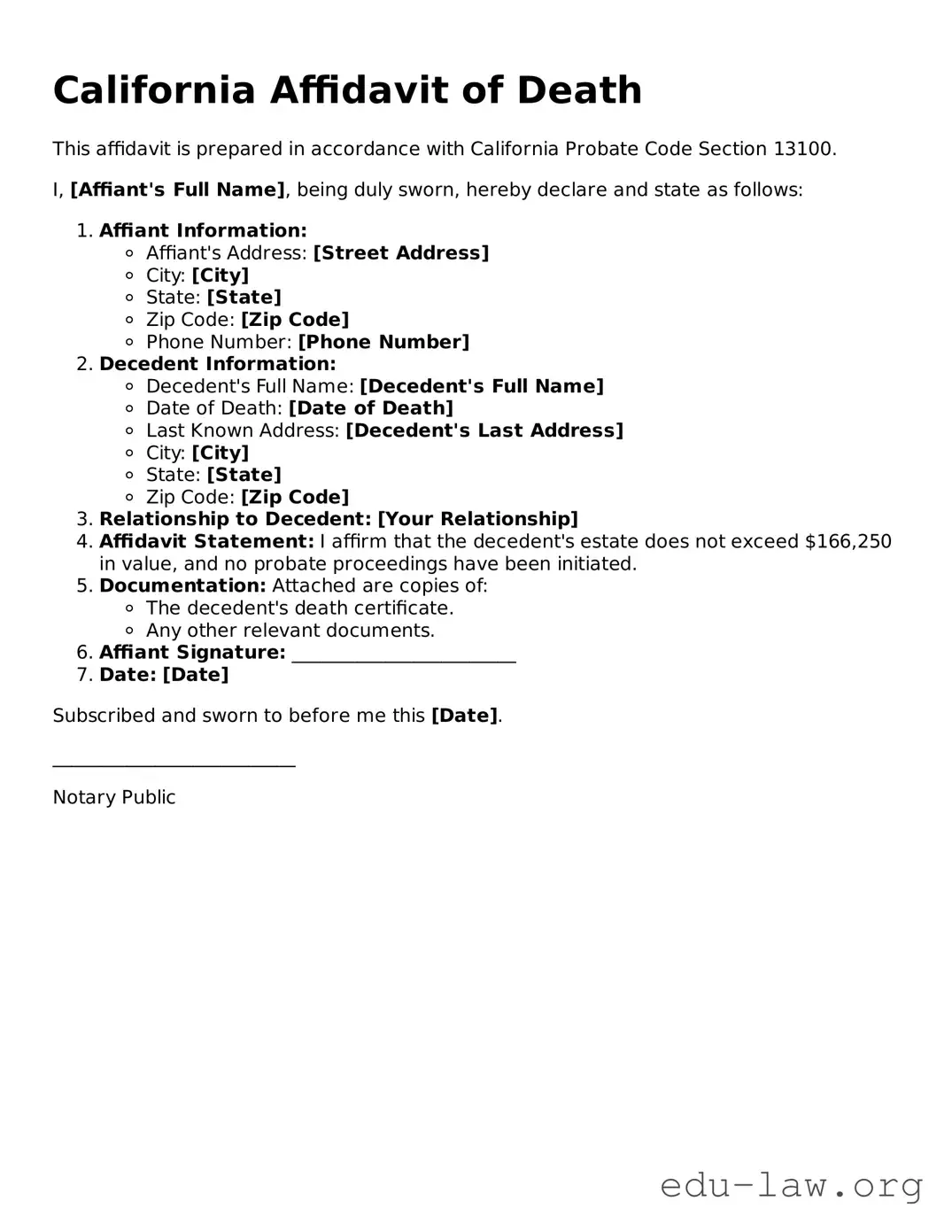What is the California Affidavit of Death form?
The California Affidavit of Death form is a legal document used to confirm the death of an individual. This form serves as an official declaration and is often utilized when dealing with the deceased's assets, such as real estate or bank accounts. It provides necessary proof to transfer property, settle debts, or complete other legal matters following an individual’s death.
Who is eligible to file an Affidavit of Death in California?
In California, the Affidavit of Death can be filed by individuals who have a legal interest in the deceased's estate. This typically includes family members, such as spouses, children, or siblings. Additionally, representatives of the deceased’s estate, such as executors or administrators, may also file the affidavit.
How do I obtain the California Affidavit of Death form?
The Affidavit of Death form can be obtained online from the California state court website or other legal resources. It may also be available at local probate courts or public libraries. Ensure that any form you download is the most current version to comply with legal requirements.
What information is required to complete the form?
Key details needed to fill out the California Affidavit of Death include the full name of the deceased, the date of death, and the cause of death. The affiant must also provide personal contact information and, if applicable, details regarding their relationship to the deceased. Signature verification may be required to enhance the form’s validity.
Is there a specific format for filing the Affidavit of Death?
There is no strict format mandated for the Affidavit of Death, but it must be clearly written and organized. It's essential to follow any local court guidelines or specific instructions from the relevant authority when preparing and submitting the form. Some courts may have particular filing requirements, including notarization.
What happens after I file the Affidavit of Death?
Once the Affidavit of Death is filed, it becomes a part of the legal record regarding the deceased's estate. This document can then be used to transfer property titles, close bank accounts, and address other estate matters. It is advisable to keep copies of the affidavit for personal records and for any proceedings relating to the estate.
Can I change or revoke the Affidavit of Death after filing?
Once filed, changes to the Affidavit of Death are generally not allowed. If an error is discovered after submission, the correct procedure often involves submitting a new affidavit that clearly states the necessary corrections. If clarification or additional context is needed, consult with a legal professional for guidance on your specific situation.
